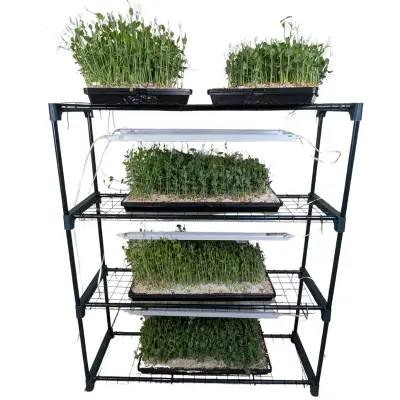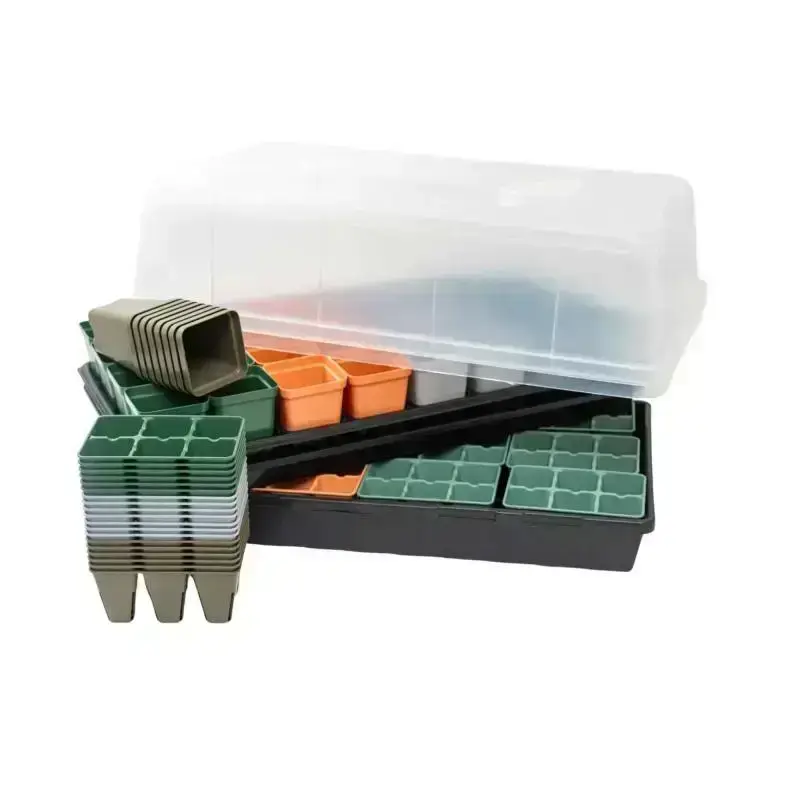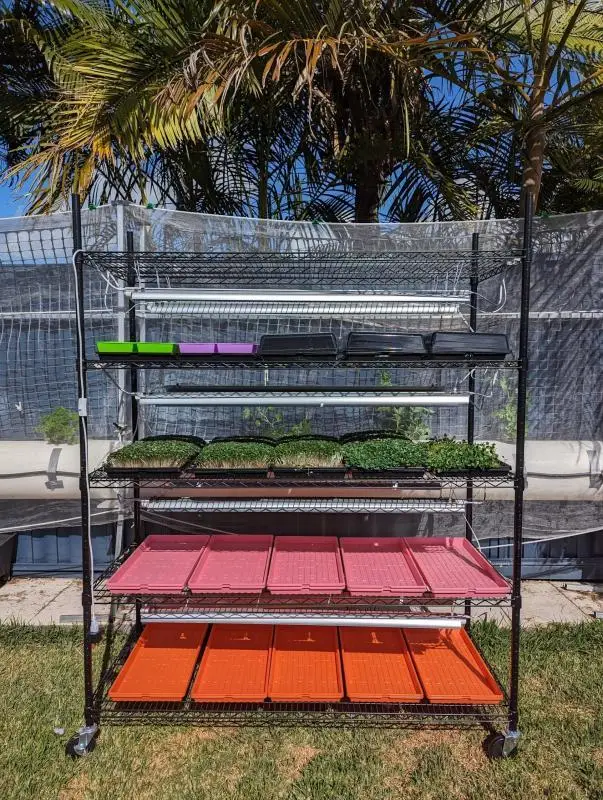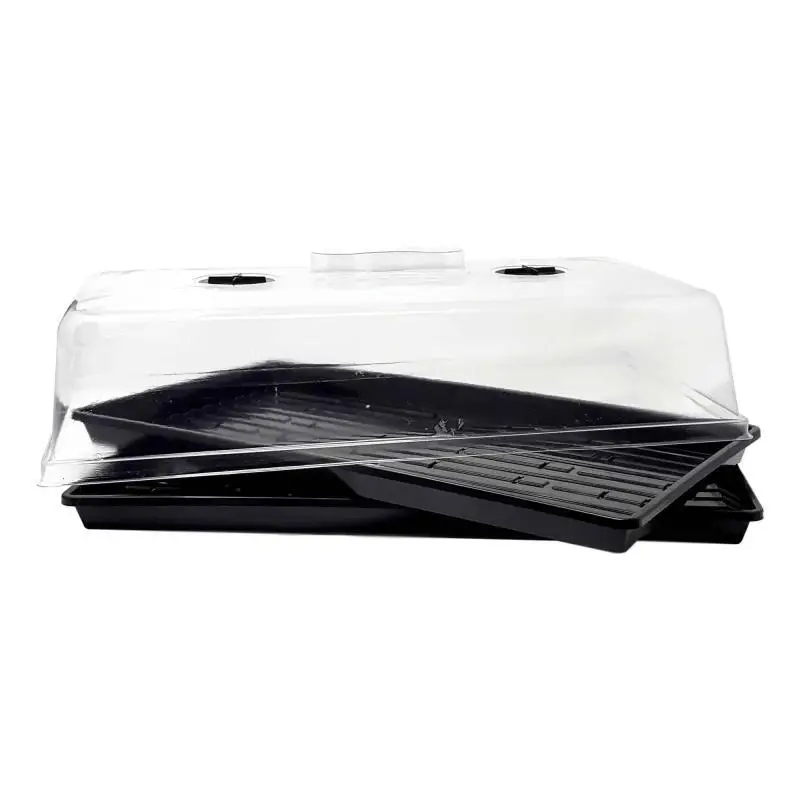Microgreen Business Considerations in Australia compared to the US

Microgreen Business Considerations in Australia compared to the US
Understanding the nuances between the US and Australian markets is crucial for Australians who have primarily accessed US-based resources on microgreen businesses. There are some excellent resources available, but we need to understand that the authors of these resources have, understandably, a very US and Canada centric view. However, the Australian context is significantly different from these countries. Here are some key similarities and differences to consider:
Similarities
- Growing Techniques: Basic techniques for growing microgreens are largely similar across both countries. This includes seed selection, soaking, sowing, providing adequate light and moisture, temperature and humidity control, and harvesting methods (Natural Yield) (Bootstrap Farmer).
- Demand for Healthy Foods: Both the US and Australia are seeing a growing trend in health-conscious eating. Microgreens are increasingly popular due to their nutritional benefits and are used in various culinary settings (Natural Yield).
- Marketing Strategies: The importance of digital marketing, such as a robust online presence, social media engagement, and direct marketing through platforms like Facebook and Google, is equally relevant in both countries. This includes creating an attractive website, active social media profiles, and targeted online ads (GottaGrow.io).
- Variety of Growing Mediums: Both the US and Australia utilize a range of growing mediums for microgreens, including soil, coco coir, hemp mats, and soilless mixes. These mediums are chosen based on their water retention, root support, pH stability, and nutritional content.
- Organic Growing Practices: In both countries, there's a trend towards organic farming practices for microgreens, emphasizing the use of natural, sustainable materials and reducing reliance on chemical additives.
- Nutrient Sources: In both the US and Australia, the primary nutrients for microgreens come from the seeds themselves. Additional nutrients are often not necessary for the short growth period of microgreens, although they can be supplemented if desired.
Differences
- Market Dynamics and Consumer Preferences: The Australian market might differ in terms of consumer taste preferences and demand patterns. For example, certain microgreen varieties might be more popular in Australia than in the US. It’s important to understand local tastes and culinary trends.
- Regulatory Environment: Australia has its own set of agricultural and business regulations which differ from those in the US. This includes different rules for organic certification, business licensing, and health and safety standards. Australian growers need to be familiar with local regulations, particularly those related to agriculture and food safety.
- Climate and Growing Conditions: Australia's diverse climate can impact the growing of microgreens. The methods that work in the varied climates of the US might need adjustment in Australia, particularly in terms of managing temperature and humidity levels.
- Seed and Equipment Availability: While many seed varieties and growing equipment are available globally, there might be specific brands or types that are more accessible in the US than in Australia. It’s important for Australian growers to identify local suppliers or international suppliers that ship to Australia.
- Population Density and Market Access: Australia’s population distribution and urban planning are different from the US, which can impact market access and distribution strategies. For instance, access to farmers' markets or direct delivery options might vary significantly between urban and rural areas in Australia.
- Awareness and Educational Resources: There may be a difference in the level of awareness and availability of educational resources on microgreens between the two countries. US resources might not address specific Australian challenges such as local pests or soil conditions.
- Local Networking and Partnerships: The scope and nature of local networking opportunities, like farmers' markets or collaborations with restaurants and cafes, may vary. It's crucial for Australian entrepreneurs to connect with local networks for advice and business opportunities.
- Availability of Specific Products: Certain products, like ProMix, commonly used in North America, may not be available in Australia. Australian growers often turn to local alternatives for growing mediums, and companies like Natural Yield provide these alternatives.
- Local Materials and Preferences: Australian growers might prefer locally sourced materials, like certain types of compost or peat moss alternatives, which are more readily available and suitable for the local environment.
- Environmental Conditions: The climate and environmental conditions in Australia may necessitate different approaches to moisture management and medium selection. For instance, in areas with higher humidity, mediums that do not retain excessive moisture might be preferable.
- Market Preferences for Organic Products: The Australian market may have different standards or preferences when it comes to organic microgreens, influencing the choice of growing mediums and nutrient sources. Australian regulations on organic farming might also differ from those in the US, impacting the choice of inputs for microgreen cultivation.
In conclusion, while the foundational aspects of starting and operating a microgreens business are similar in the US and Australia, adapting to local Australian conditions, regulations, and market preferences is key to success. Australian entrepreneurs should leverage the wealth of information available from US sources but tailor their strategies to suit the unique Australian context.
Additionally, while the fundamental aspects of growing microgreens such as the types of mediums used and the organic approach are similar in the US and Australia, the specific products available and environmental conditions necessitate tailored approaches in each country. Australian growers need to consider local preferences, climate, and available resources when choosing their growing mediums and nutrients.
Further Information
At Natural Yield, there are several articles that could further enrich the discussion about starting and managing a microgreen business in Australia, particularly in relation to grow media, nutrients, and general cultivation practices. Some relevant articles include:
- "A guide to a successful microgreens growing business"
- "The Warm Embrace: Using Heat Mats with Thermostats for Thriving Seedlings and Microgreens"
- "Choosing the Right Grow Lights for Seedlings and Microgreens"
- "How to use Humidity Domes for Seed Starting and Microgreens"
- "Hydroponic and Microgreen media – pros and cons"
- "Mastering Herbs & Flowers with 5×5 Seed Starting Trays"
- "Bottom Watering vs Top Watering for Seedlings and Microgreens"
- "An Introduction to Soil Blocking"
- "The Top 10 Tips for Successful Seed Starting"
- "Choosing your Microgreen Trays"
- "Growing Microgreens at home can relieve the household food budget"
These articles cover a range of topics that are directly relevant to microgreen cultivation, offering practical advice and insights that can be particularly useful for Australian readers interested in this field. For more detailed information, you can explore these articles on the Natural Yield website. Also, we are very happy to have a chat So give us a call or reach out on the website chat.





